Mirabilis coccinea, Scarlet Four O'clock
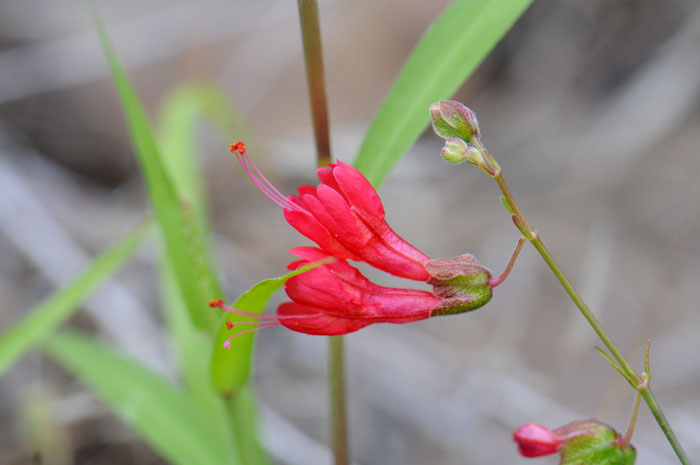
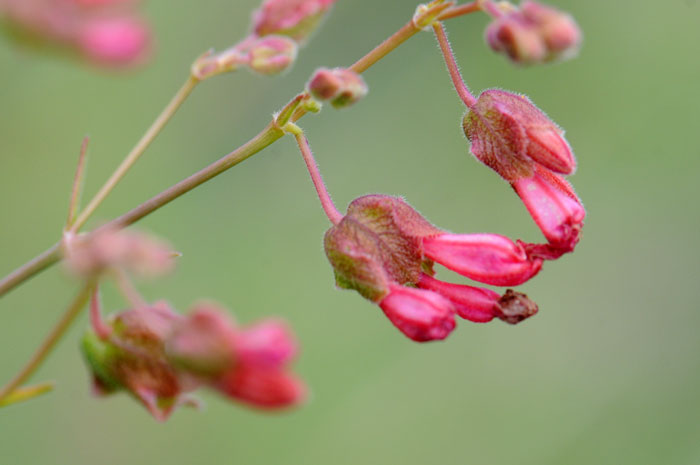
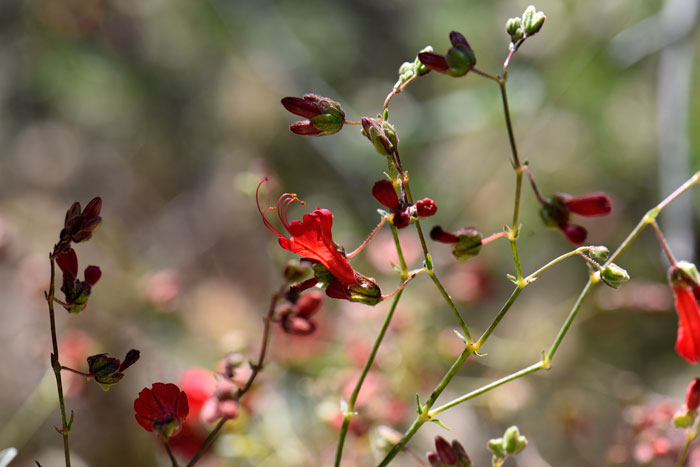
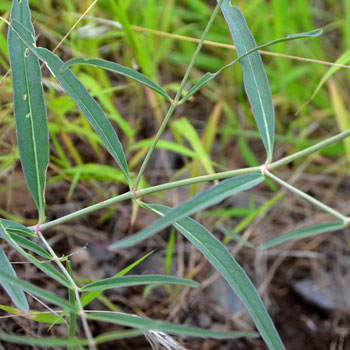
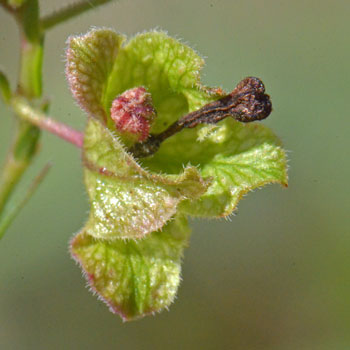
Scientific Name: Mirabilis coccinea
Common Name: Scarlet Four O'clock
Also Called: Red Four-O'clock, Scarlet Four-O'clock
Family: Nyctaginaceae, Four O’clock Family
Synonyms: (Oxybaphus coccineus)
Status: Native
Duration: Perennial
Size: Up to 3 to 4 feet or more.
Growth Form: Forb/herb; stems weak and spindly, erect or ascending, stems glabrous, glaucous.
Leaves: Green; leaf blades sessile, linear, also glabrous.
Flower Color: Carmine-red, bright red or deep pink; perianth or "flowers" forming a narrow, funnel-shaped tube, 1 to 3 "flowers" from cup-shaped bracts, fruit club-shaped with coarse wrinkles.
Flowering Season: May to August.
Elevation: 4,000 to 6,500 feet.
Habitat Preferences: Open pines, dry rocky slopes, washes and grassy slopes.
Recorded Range: Mirabilis coccinea is found in the southwestern United States in AZ, CA, NM and NV. In Arizona it is found throughout much of the state. It is also native to northern Mexico.
North America & US County Distribution Map for Mirabilis coccinea.
U.S. Weed Information: No information available.
Invasive/Noxious Weed Information: No information available.
Wetland Indicator: No information available.
Threatened/Endangered Information: No information available.
Genus Information: 29 species more or less in Mirabilis throughout North America. 14 species in AZ and TX, 13 species in New Mexico and 12 species in California.
The Plant List includes 224 scientific plant names of species rank for the genus Mirabilis. Of these 63 are accepted species names.
Comments: Considered one of the most beautiful species of Mirabilis in Arizona.
Also see in Southwest Desert Flora; Desert Wishbone-bush, Mirabilis laevis, Colorado Four O'clock, Mirabilis multiflora and Dwarf Four O'clock, Mirabilis pumila.Scarlet Four O'clock is or has been used as a dermatological aid (Hopi Drug) and as a venereal aid (Yavapai Drug). See ethno-botanical uses at Native American Ethnobotany, University of Michigan, Dearborn.

